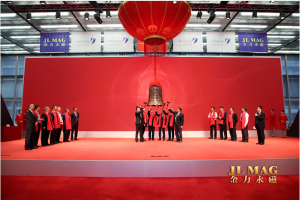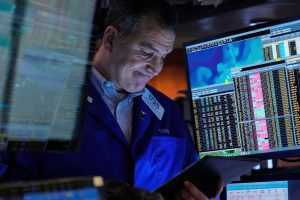It’s been a very good time to be a gold bug. Gold has experienced a renaissance recently as investors have sought safe havens amid growing economic uncertainty following weaker U.S. economic data and an escalating trade war.
Gold prices have surged about 20% in 2025, including an impressive 10% return in April, largely after President Trump’s Liberation Day tariff announcement on April 2.
Related: Billionaire Jeffrey Gundlach sends blunt warning on stocks, bonds
The rapid rise in gold prices is particularly intriguing to many investors, given the struggles of stocks and Treasury bonds. The S&P 500 is down 9% this year, while the 20-year Treasury Bond ETF (TLT) has lost 3.5% of its value this month.
Gold’s significant outperformance has caught the attention of major gold analysts, who recently reset their gold targets following the big move higher.
The U.S. economy was already experiencing signs of slowing down heading into this month’s big tariff announcement.
While unemployment remains historically low, it has increased to 4.2% from 3.5% in 2023, and there’s been an increase in layoffs lately. Over 497,000 people were laid off in the first quarter, the most in the quarter since 2009, and up 93% from Q1, 2024, according to Challenger, Gray, & Christmas.
Related: Jamie Dimon sends candid message on economy, stocks
We’ve also seen weaker manufacturing and services sector activity this year. ISM’s manufacturing index fell to 49 in March from 50.9 in December, and its services index slumped to 50.8, down from 54 in December. Readings below 50 are generally associated with a contracting economy.
Slowing economic data has the Atlanta Fed’s GDPNow forecasting tool predicting negative 2.4% GDP growth in the first quarter. That number will likely change as more data is reported, but it still looks very likely that GDP will register meaningfully shy of the 3% pace seen last summer.
The new tariffs will likely compound problems. President Trump’s decision to impose import taxes on most countries of at least 10% is inflationary, as most companies will look to pass along higher costs to customers.
The problem is much worse for China’s imports, given that an escalating trade war has erupted. U.S. tariffs on Chinese imports are 145%, and China’s tariffs on American imports are 125%. These levels are high enough to effectively shut down trade between the two giant economies.
The combination of weaker GDP and potentially sticky inflation has economists worried about stagflation, or worse, a recession.


